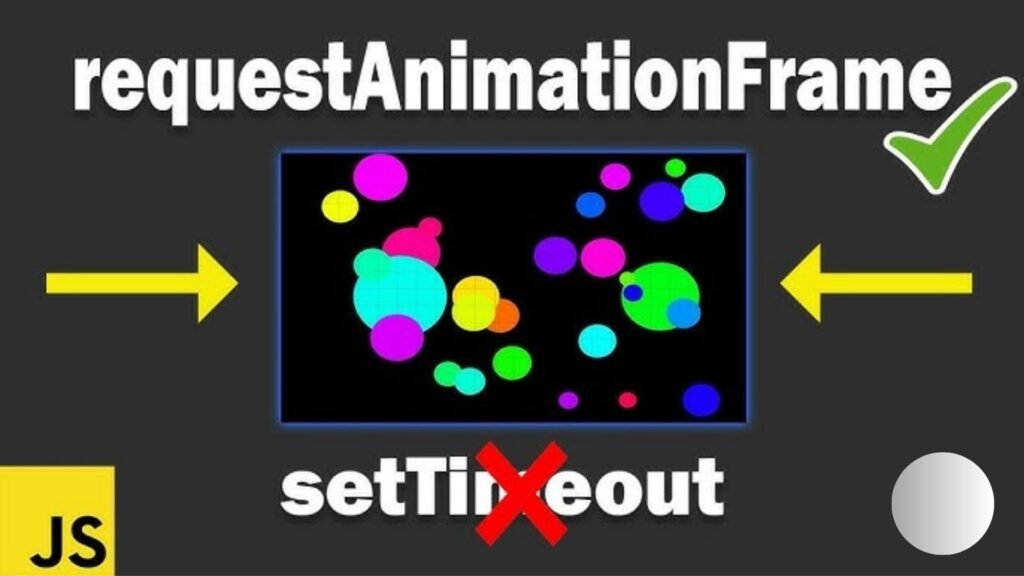In today’s digital landscape, speed is king. For web developers, tech enthusiasts, and SEO professionals, optimizing JavaScript is crucial not only for enhancing Web Performance but also for ensuring a seamless user experience. By implementing strategic JavaScript Web Performance optimization techniques, websites can become faster, more efficient, and more engaging for users.
Throughout this blog post, we’ll explore various optimization techniques, from minification to caching, and everything in between. You’ll learn how to implement these strategies effectively and discover tools and best practices that will make your JavaScript code run like a well-oiled machine. Whether you’re new to the world of web development or an experienced coder, these insights will help you elevate the performance of your web applications and stay ahead in the competitive digital space.
Importance of JavaScript Web Performance Optimization
JavaScript has evolved into a powerhouse scripting language, driving interactivity and dynamic content on countless websites. However, if not optimized, JavaScript can become a bottleneck that hampers Web Performance. Faster loading times lead to better user experiences, higher engagement rates, and improved SEO rankings. In fact, research shows that a one-second delay in page load time can result in a 7% reduction in conversions. Therefore, understanding and applying JavaScript optimization techniques is paramount for web developers and businesses alike.
Expert Insight
“JavaScript optimization is not just about making code run faster; it’s about improving the overall user experience by reducing the time it takes for a page to load and become interactive.” – Web Developer Community Leader
JavaScript Web Performance is directly linked to user satisfaction. By focusing on optimization, developers can create web experiences that are both efficient and enjoyable, paving the way for greater success in the digital realm. Now, let’s explore the key techniques for optimizing JavaScript Web Performance.
Minimizing JavaScript File Size with Minification
Minification is one of the simplest yet most effective techniques for reducing JavaScript file sizes. By removing unnecessary characters, whitespace, and comments, minification streamlines the code without altering its functionality. This results in faster load times and improved web performance.

Tools such as UglifyJS and Terser can automate the minification process, making it easy for developers to integrate this practice into their workflow. Once implemented, minification can significantly reduce the amount of data transferred over the network, leading to quicker initial page loads.
Expert Insight
“Minifying and compressing JavaScript files is one of the simplest yet most effective techniques for improving web performance. Every byte counts when it comes to web performance.” – Tech Evangelist
Regularly minifying and compressing JavaScript files should become a standard practice for developers seeking to maximize their website’s performance potential. By taking advantage of minification tools, websites can achieve faster load times and provide a smoother user experience.
Using Code Splitting for Optimized Bundle Sizes
Code splitting involves breaking down large JavaScript files into smaller, more manageable chunks. This technique allows developers to load only the code necessary for the initial render, deferring the rest until it’s needed. The result is faster page loads and an improved time to interactive.
Webpack is a popular tool for implementing code splitting. By configuring entry points and using dynamic imports, developers can tailor their JavaScript bundles to load resources efficiently. This reduces the initial payload and enhances the overall performance of web applications.
Expert Insight
“Code splitting is a crucial technique for large web apps. It allows you to load only the JavaScript that is needed for the initial render, making the app load faster and reducing the time to interactive.” – Frontend Architect
Code splitting is especially beneficial for complex applications with extensive codebases. By adopting this technique, developers can ensure that their web apps remain responsive and performant, even as they grow in complexity and functionality.
Lazy Loading JavaScript for Improved Performance
Lazy loading is a technique that defers the loading of non-essential JavaScript until it’s needed. By loading only the critical resources upfront, developers can reduce initial page loads, leading to a faster and more seamless user experience.
Implementing lazy loading can be achieved with libraries such as lozad.js or directly using native browser support for the `loading=”lazy”` attribute in images. This approach is particularly beneficial for content-heavy websites, as it allows them to prioritize the delivery of essential content while deferring less critical assets.
Expert Insight
“Lazy loading non-essential JavaScript can significantly improve page load times, especially for content-heavy websites. It’s a practice that’s gaining more importance with the growing trend of single-page applications.” – SEO Expert
By adopting lazy loading, developers can enhance the web performance, ensuring that users can access the most important content quickly and without unnecessary delays. This technique aligns with modern web development principles, where user experience and web performance are of utmost importance.
Debouncing and Throttling: Managing High-Frequency Events
Debouncing and throttling are techniques used to manage high-frequency events, such as scrolling, resizing, or keypresses. These methods control the rate at which functions are executed, preventing unnecessary performance bottlenecks.
Debouncing delays the execution of a function until a specified time after the last event has triggered. This is useful for scenarios where you want to limit the number of API calls made during rapid user actions, like typing in a search box.
Throttling, on the other hand, ensures that a function is executed at regular intervals, regardless of how many times an event is triggered. This is ideal for functions that should run at a consistent pace, like updating a progress bar during a scroll.
By leveraging debouncing and throttling, developers can optimize web performance and ensure smoother user interactions. These techniques are essential for maintaining responsive interfaces, especially when dealing with high-frequency events.
Optimizing DOM Manipulation in JavaScript
DOM manipulation is a common performance bottleneck in JavaScript applications. Each time the DOM is updated, the browser must re-calculate styles, re-render elements, and re-paint the page. By optimizing how JavaScript interacts with the DOM, developers can improve rendering performance and enhance user experiences.
One effective strategy is to batch DOM updates together, minimizing the number of reflows and repaints. This can be achieved by making multiple changes to a document fragment before appending it to the DOM. Additionally, using virtual DOM libraries like React can significantly reduce the overhead associated with direct DOM manipulation.
Expert Insight
“Optimizing DOM manipulation is often overlooked, yet it’s critical for smooth user interactions. Developers need to be mindful of how they update the DOM to avoid performance bottlenecks.” – JavaScript Framework Contributor
By being mindful of DOM manipulation practices, developers can achieve faster rendering times and ensure that their applications remain responsive and efficient, even when handling complex UIs.
Using Request Animation Frame for Smooth Animations
For smooth and efficient animations in JavaScript, leveraging `requestAnimationFrame()` is essential. This method provides a way to create animations that are synchronized with the browser’s refresh rate, resulting in smoother transitions and reduced CPU usage.
Instead of relying on `setTimeout()` or `setInterval()` for animations, which can lead to inconsistent frame rates, `requestAnimationFrame()` ensures that animations are executed at the optimal time. This improves both the visual quality and performance of animations which also increase the web performance.

By utilizing `requestAnimationFrame()`, developers can create polished animations that enhance the user experience and align with modern web performance standards. This technique is particularly valuable for applications that rely heavily on animation and visual effects.
Avoiding Memory Leaks in JavaScript
Memory leaks occur when JavaScript objects are not released from memory even after they are no longer needed. These can lead to increased memory usage and degraded performance over time. By identifying and preventing memory leaks, developers can ensure efficient resource usage and maintain application performance.
One common cause of memory leaks is improper handling of event listeners. Ensure that listeners are removed when they’re no longer needed, especially in single-page applications that frequently update views. Additionally, be cautious when using global variables, as they persist across the lifetime of the application.
Actionable Tip
Use browser developer tools to monitor memory usage and detect potential leaks. Tools like the Chrome DevTools Memory panel can help identify objects that are not being garbage collected.
By proactively managing memory and avoiding common pitfalls, developers can create applications that run efficiently and sustain long-term performance, even as they scale.
Optimizing Loops and Iterations in JavaScript
Loops and iterations are fundamental to JavaScript programming, but they can also become performance bottlenecks if not optimized. By following best practices for loop optimization, developers can significantly improve execution speed and reduce unnecessary overhead.
When iterating over arrays, prefer using native methods like `forEach()`, `map()`, or `reduce()`, which are optimized for performance in modern JavaScript engines. Avoid nested loops when possible, as they can exponentially increase the number of iterations and degrade performance.
Actionable Tip
Use caching techniques to store frequently accessed values outside of loops. This reduces redundant operations and enhances loop efficiency.
By optimizing loops and iterations, developers can ensure that their code runs smoothly and efficiently, contributing to the overall performance of the application.
Using Web Workers for Multithreading in JavaScript
Web workers provide a way to execute JavaScript code on background threads, allowing developers to offload heavy tasks without blocking the main thread. By leveraging web workers, applications can maintain smooth user interactions while processing resource-intensive operations.
Examples of tasks well-suited for web workers include image processing, data parsing, and complex calculations. By distributing these tasks across multiple threads, developers can enhance the performance and responsiveness of their applications.
Actionable Tip
Use the `Worker` API to create web workers and communicate with them via `postMessage()`. This allows for efficient data transfer between threads.
By incorporating web workers into their applications, developers can take advantage of multithreading capabilities and create highly efficient, responsive web experiences.
Caching Results to Improve JavaScript Performance
Caching is a powerful strategy for improving JavaScript performance by storing the results of expensive computations. By caching data and computations, developers can reduce the need for repeated calculations and enhance application speed and web performance both.
One common approach to caching is memorization, which involves storing the results of function calls and returning the cached result when the same inputs occur again. Memoization is particularly useful for functions with deterministic outputs, such as mathematical calculations or API responses.
Actionable Tip
Implement a simple caching mechanism using JavaScript objects or maps to store cached results. This can lead to significant web performance improvements.
By adopting caching strategies, developers can optimize resource usage and create applications that deliver quick, consistent responses, even under load.
Reducing the Use of Global Variables
Global variables are often a source of performance issues and potential conflicts in JavaScript applications. By minimizing their use, developers can create cleaner, more maintainable code and reduce memory consumption.
Instead of relying on global variables, encapsulate data within functions or use module patterns to scope variables. This approach not only reduces memory usage but also prevents unintended side effects caused by variable pollution.

Actionable Tip
Use ES6 modules to organize code and manage dependencies. This provides a structured way to handle variables and avoid global scope pollution.
By reducing the reliance on global variables, developers can create more efficient and maintainable codebases, contributing to improved the web performance and overall application quality.
Asynchronous JavaScript: Using Promises and Async/Await Efficiently
Managing asynchronous operations effectively is crucial for optimizing JavaScript for web performance. Promises and the `async/await` syntax provide a clean and efficient way to handle asynchronous tasks, ensuring that applications remain responsive and performant.
Using promises allows developers to chain asynchronous operations, handling success and error cases gracefully. The `async/await` syntax builds on promises, providing a more readable way to write asynchronous code that resembles synchronous logic.
Actionable Tip
Use the `try/catch` block with `async/await` to handle errors effectively and ensure robust error management in asynchronous code.
By mastering asynchronous JavaScript, developers can create applications that perform smoothly, even when dealing with network requests or time-consuming operations.
Optimizing JavaScript with Tree Shaking
Tree shaking is a technique used to eliminate unused code from JavaScript bundles, resulting in smaller, more efficient builds. By removing dead code, developers can reduce bundle sizes and improve load times.
Modern build tools like Webpack offer built-in support for tree shaking. By adhering to ES6 module syntax and configuring the build tool correctly, developers can take advantage of tree shaking to produce optimized output.
Actionable Tip
Use `sideEffects` in `package.json` to mark packages that can be safely tree-shaken, further optimizing bundle sizes.
By implementing tree shaking, developers can streamline their JavaScript codebases, enhancing web performance and ensuring that only essential code is delivered to users.
Efficient Event Handling in JavaScript
Efficient event handling is critical for maintaining responsive applications, especially in scenarios where multiple event listeners are active. By following best practices for event handling, developers can reduce the overhead of event listeners and improve web performance.
Use event delegation to manage events at a higher level in the DOM, reducing the number of individual listeners attached to elements. This approach is particularly effective for handling events on dynamically generated content.
Actionable Tip
Avoid attaching event listeners inside loops or frequently executed functions. Instead, use a single listener to handle multiple events when possible.
By optimizing event handling, developers can ensure that their applications remain responsive and efficient, providing a seamless user experience even under heavy interaction.
Using the `setTimeout` and `setInterval` Wisely
While `setTimeout()` and `setInterval()` are useful for scheduling tasks, they can introduce performance issues if not used wisely. By understanding their impact on web performance, developers can avoid common pitfalls and ensure smooth application operation.
Use `setTimeout()` for tasks that need to be executed after a delay, such as animations or timed events. However, avoid nesting `setTimeout()` calls, as this can lead to excessive resource consumption.
For repeated tasks, prefer `setInterval()` over repeatedly invoking `setTimeout()`. Be cautious of potential drift in timing, and consider using `requestAnimationFrame()` for smoother animations.
By using these functions thoughtfully, developers can manage task scheduling efficiently and maintain the performance of their applications, even when dealing with time-sensitive operations.
Memory Management in JavaScript: Garbage Collection and Optimization
Memory management is a critical aspect of JavaScript performance, and understanding how the garbage collector works is essential for creating efficient applications. By optimizing memory usage, developers can ensure that their applications run smoothly and avoid performance degradation over time.
The JavaScript garbage collector automatically frees memory that is no longer in use, but developers can optimize memory management by adhering to best practices. This includes avoiding memory leaks by properly dereferencing objects and ensuring that closures do not unintentionally retain references to variables.
Actionable Tip
Use tools like the Chrome DevTools Memory panel to monitor memory usage and identify potential leaks or inefficiencies.
By taking a proactive approach to memory management, developers can create applications that run efficiently and maintain performance over extended periods, even as their complexity grows.
Optimizing Network Requests in JavaScript
Network requests can significantly impact JavaScript performance, especially in applications that rely heavily on external data. By optimizing how network requests are handled, developers can reduce latency and improve overall application responsiveness.
Leverage techniques such as data compression, caching, and request batching to minimize the impact of network requests. Consider using Service Workers to enable offline capabilities and cache resources for faster subsequent loads.
Actionable Tip
Use the Fetch API with `async/await` for cleaner and more efficient handling of network requests, ensuring that asynchronous operations are managed effectively.
By optimizing network requests, developers can enhance the performance and reliability of their applications, delivering faster and more consistent experiences to users.
Using the Chrome DevTools for JavaScript Performance Profiling
Chrome DevTools provides a powerful set of tools for profiling JavaScript performance and identifying bottlenecks. By leveraging these tools, developers can gain valuable insights into how their code executes and uncover opportunities for optimization.

Use the Performance panel to record and analyze runtime performance, identifying slow functions, layout thrashing, and other web performance issues. The Memory panel allows developers to track memory usage and detect potential leaks.
Actionable Tip
Regularly profile your applications using Chrome DevTools to measure the impact of optimizations and ensure that web performance remains consistent over time.
By incorporating performance profiling into their development workflow, developers can proactively address performance concerns and create applications that deliver optimal user experiences.
Best Practices for Writing Efficient JavaScript Code
Writing efficient JavaScript code is essential for achieving optimal web performance and maintainability. By adhering to best practices, developers can create code that is both performant and easy to understand.
Prioritize readability and clarity, using descriptive variable names and consistent formatting. Avoid premature optimization, focusing instead on writing clean and maintainable code that can be optimized as needed.
Actionable Tip
Incorporate code reviews and pair programming into your development process to ensure that code remains efficient and adheres to best practices.
By fostering a culture of efficiency and quality, developers can create JavaScript applications that are both performant and sustainable, providing lasting value to users and businesses alike.
Conclusion
JavaScript web performance optimization is a multifaceted endeavor that requires a deep understanding of both the language and the browser environment. By applying the techniques and best practices outlined in this blog post, developers can create applications that are fast, efficient, and user-friendly.
From minimizing file sizes with minification to optimizing memory usage and network requests, each technique contributes to a holistic approach to web performance optimization. By leveraging the power of tools like Chrome DevTools and staying informed about the latest advancements in JavaScript development, developers can ensure that their applications remain at the forefront of web performance.
We encourage readers to explore these techniques further and experiment with their implementation in real-world projects. By doing so, you’ll be well-equipped to tackle the challenges of modern web development and deliver exceptional experiences to your users. Happy optimizing! # Keep learning and stay curious.
Frequently Asked Questions
General Optimization
- What is JavaScript optimization, and why is it important for web performance?
- JavaScript optimization involves techniques to reduce code execution time and resource consumption, enhancing website speed and responsiveness, ultimately improving user experience and SEO.
- How can I measure the performance of my JavaScript code?
- Use tools like Chrome DevTools, Lighthouse, or WebPageTest to analyze performance metrics such as load time, execution time, and rendering performance.
- What are the most common performance bottlenecks in JavaScript?
- Common bottlenecks include blocking the main thread, excessive DOM manipulation, large JavaScript bundles, synchronous AJAX requests, and inefficient loops.
- How do minification and compression improve JavaScript for web performance?
- Minification removes unnecessary characters (like whitespace), and compression reduces file size, both leading to faster download times and improved loading web performance.
- What is lazy loading, and how can it optimize JavaScript for web performance?
- Lazy loading defers loading non-essential resources (like images or scripts) until they’re needed, reducing initial page load time and resource consumption.
- What are web workers, and how can they be used to improve JavaScript for web performance?
- Web workers allow you to run scripts in background threads, offloading heavy computations from the main thread and keeping the UI responsive.
- How can I reduce JavaScript execution time for better web performance?
- Optimize loops, avoid unnecessary DOM manipulations, minimize synchronous code, and use asynchronous APIs like
Promiseorasync/await.
- Optimize loops, avoid unnecessary DOM manipulations, minimize synchronous code, and use asynchronous APIs like
- What is code splitting, and how does it help improve JavaScript for web performance?
- Code splitting divides JavaScript into smaller bundles that are loaded on demand, reducing initial load time and improving perceived performance.
Rendering and Responsiveness
- How does JavaScript affect page rendering speed?
- JavaScript can block rendering if it executes synchronously on the main thread, delaying page rendering. Optimizing script loading and execution can speed up the process.
- How can I prevent JavaScript from blocking the main thread?
- Use asynchronous loading (
asyncordeferattributes), web workers, and non-blocking API calls to prevent blocking the UI thread.
- Use asynchronous loading (
- What is the Event Loop, and how does it impact web performance in JavaScript?
- The Event Loop manages the execution of asynchronous code, ensuring that non-blocking tasks are processed in the right order. Poorly handled asynchronous tasks can cause performance issues.
- How can I optimize DOM manipulation using JavaScript?
- Minimize direct DOM manipulation, batch updates, and use virtual DOM libraries like React to optimize rendering.
Advanced Optimization Techniques
- What is tree shaking, and how does it reduce JavaScript bundle size?
- Tree shaking removes unused code from your JavaScript bundles during the build process, reducing the size of the final bundle and improving load times.
- How can I optimize the loading of third-party JavaScript libraries?
- Load third-party libraries asynchronously, use CDN versions to reduce latency, and avoid loading unnecessary libraries or versions.
- How can I defer or asynchronously load JavaScript to improve page load times?
- Use
asyncanddeferattributes to load JavaScript files after the page has finished parsing, without blocking rendering or page load.
- Use
- How do caching strategies help optimize JavaScript performance?
- Caching JavaScript files in the browser or on CDNs reduces the need to re-download resources, speeding up page load times and reducing server load.
Best Practices and Tools
- What are some best practices for writing efficient JavaScript code?
- Use efficient loops, avoid blocking code, keep functions small, and reduce redundant computations. Write clean, modular code and optimize algorithms.
- Which JavaScript performance tools and frameworks can help identify performance issues?
- Chrome DevTools, Lighthouse, WebPageTest, and tools like Bundle Analyzer can help identify performance bottlenecks in JavaScript code.
- How can I use the
requestIdleCallbackAPI to optimize JavaScript for web performance?requestIdleCallbackallows you to execute tasks when the browser is idle, reducing the impact of background tasks on the main thread and improving responsiveness.
- How can I identify and fix memory leaks in my JavaScript code?
- Use Chrome DevTools’ Memory panel to track memory usage and find leaks. Avoid circular references, clean up event listeners, and release unused objects.
Advanced Optimization Techniques
Resources for Further Learning
- Google Developers: JavaScript Performance
- Mozilla Developer Network: Writing Efficient JavaScript
- High Performance Browser Networking by Ilya Grigorik
- Addy Osmani’s Blog on Web Performance
- 10 Tips for Optimizing Your JavaScript Code – SitePoint
- JavaScript Memory Management Masterclass – YouTube
- Eloquent JavaScript by Marijn Haverbeke
- The Modern JavaScript Tutorial
- Frontend Masters: Advanced Performance Optimization in React Apps
- Udacity: Website Performance Optimization Course

I am really impressed with your writing skills and also with the layout on your blog.
Is this a paid subject or did you customize it your self?
Either way stay up the excellent high quality writing, it’s rare to peer a
nice weblog like this one nowadays. Fiverr Affiliate!